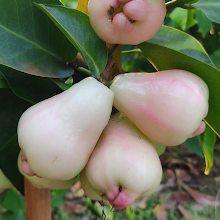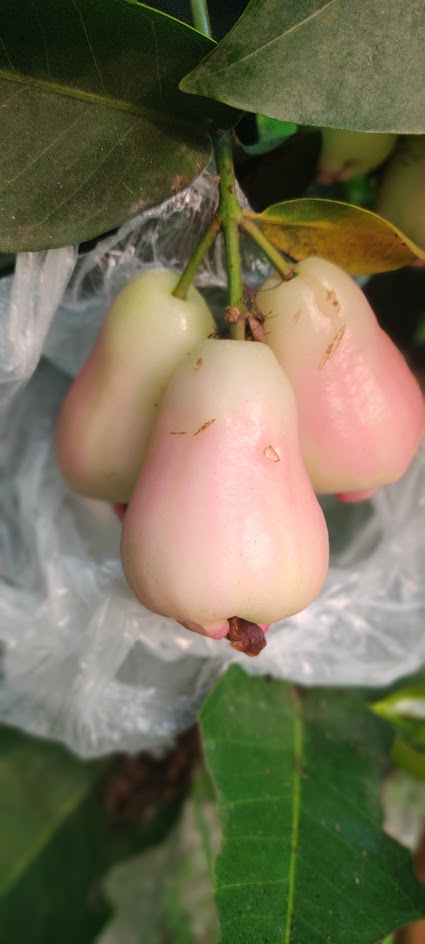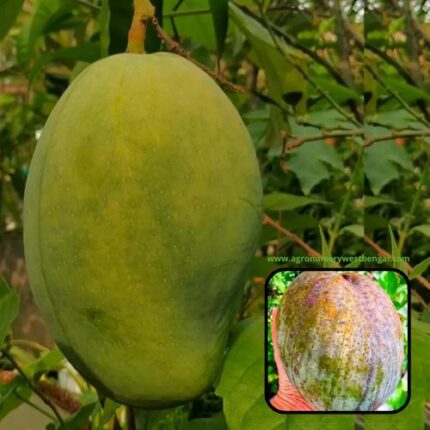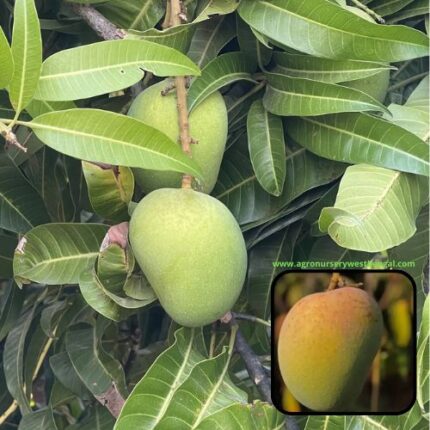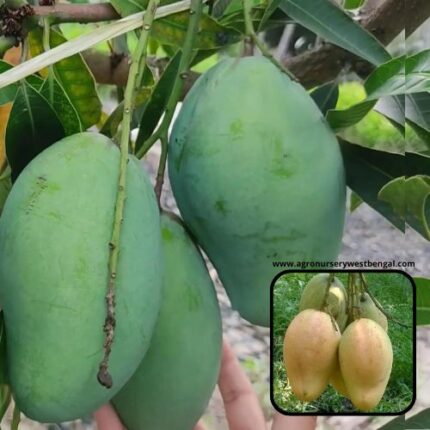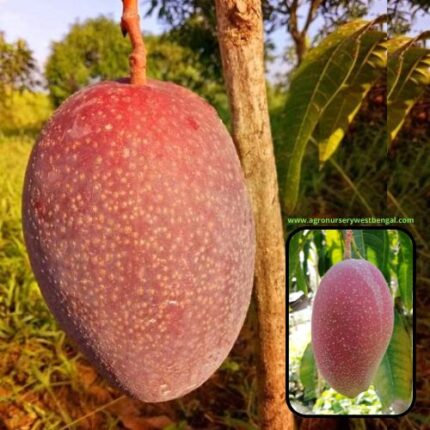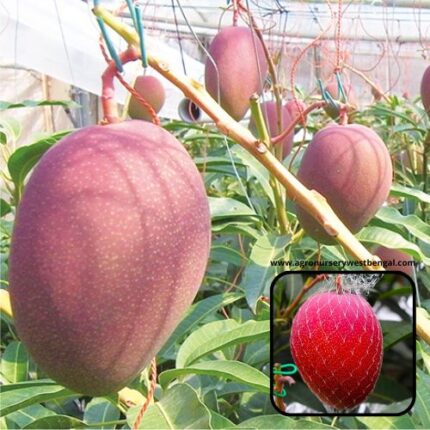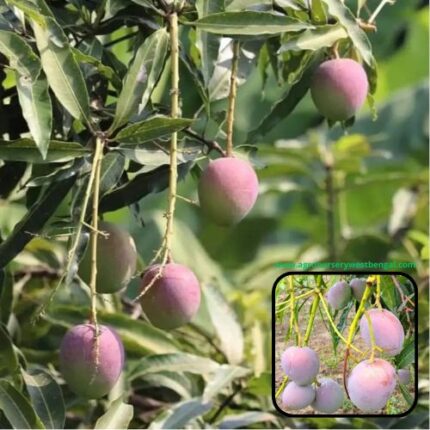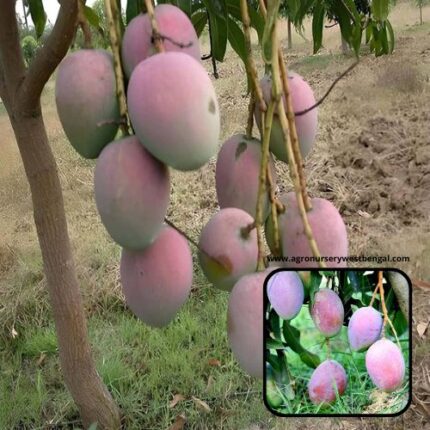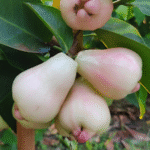
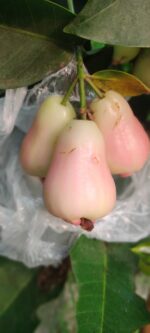
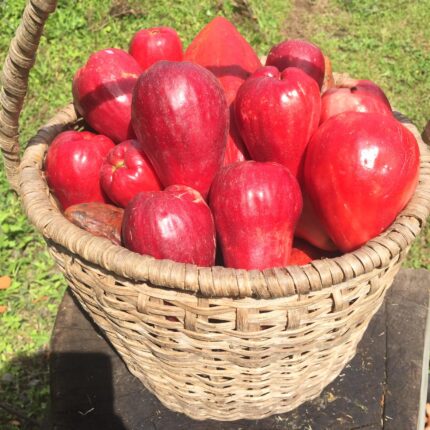
Malai water Apple Fruit plants
₹2,199 Original price was: ₹2,199.₹1,199Current price is: ₹1,199.
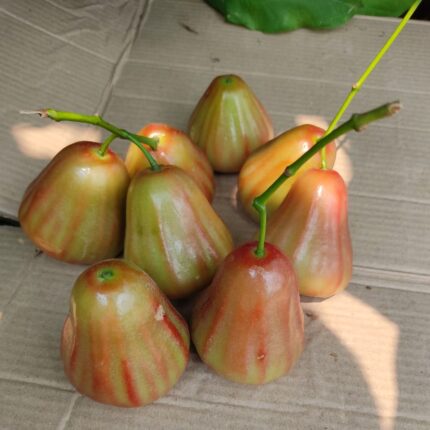
Bali Champa water apple fruit plants
₹1,099 Original price was: ₹1,099.₹599Current price is: ₹599.
White missile water apple fruit plant
₹999 Original price was: ₹999.₹499Current price is: ₹499.
Category: Fruit Plants
Description
“Water Apple” is a common name used for several species within the Syzygium genus, primarily in tropical and subtropical regions. While they share some general characteristics, there can be variations in appearance, taste, and texture depending on the specific species. The two most commonly referred to as “water apple” are:
- Watery Rose Apple (Syzygium aqueum): Often simply called “Water Apple” or “Bell Fruit.”
- Wax Apple (Syzygium samarangense): Also known as Java Apple, Semarang Rose-Apple, or Wax Jambu.
Here’s a general description that encompasses the common features of “water apple” fruits:
General Appearance:
- Shape: Typically bell-shaped, pear-shaped, or sometimes oblong, wider at the bottom and narrowing towards the stem.
- Skin: Thin, smooth, and often waxy or glossy. The color varies greatly depending on the variety, ranging from pale green, white, or pink to vibrant red, crimson, or even deep purple.
- Flesh: White or pale pink, crisp, and very juicy. The texture is often described as spongy, airy, or similar to a slightly firmer watermelon or Asian pear. It’s not as dense or fibrous as a common apple.
- Seeds: Most varieties are seedless or contain only one to a few small, round seeds, often suppressed or underdeveloped.
Taste and Aroma:
- Taste: Generally mildly sweet and refreshing, with a very high water content. Some varieties can have a subtle tartness or a slightly astringent quality when unripe. The flavor is often described as “bland” by those expecting a strong taste, but its high water content makes it an excellent thirst-quencher.
- Aroma: Often has a light, pleasant rose-like scent, which is why some varieties are also called “rose apples.”
Key Characteristics and Uses:
- High Water Content: The defining characteristic is its extremely high water content (often over 90%), making it incredibly hydrating and low in calories. This makes it a popular fruit in hot climates for refreshment.
- Nutritional Value: A good source of Vitamin C (an antioxidant for immune health), Vitamin A, and some B vitamins. It also contains minerals like potassium, calcium, magnesium, and iron, and beneficial phenolic compounds and flavonoids.
- Low Calorie & Diet-Friendly: Due to its high water and fiber content, it’s a good choice for those managing weight.
- Culinary Uses:
- Fresh: Primarily eaten fresh and raw, often chilled, for its refreshing qualities.
- Salads: Sliced and added to fruit salads.
- Processed: Can be used in jams, jellies, juices, smoothies, and sometimes in pickles or chutneys (especially unripe, more astringent fruits).
- Savory Dishes: In some cuisines, it’s added to curries or stir-fries for a touch of sweetness and crunch.
- Traditional Medicine: Various parts of the tree and fruit have been used traditionally for their purported medicinal properties, including supporting digestion, managing blood sugar, and anti-inflammatory effects.
- Growth: Water apple trees are tropical trees that require consistent rainfall and humid conditions. They are sensitive to frost. The fruit often grows in clusters directly on the branches and even the trunk.
In essence, the water apple is a beautiful and hydrating tropical fruit, appreciated more for its refreshing crunch and juicy texture than for a strong, distinctive flavor.

